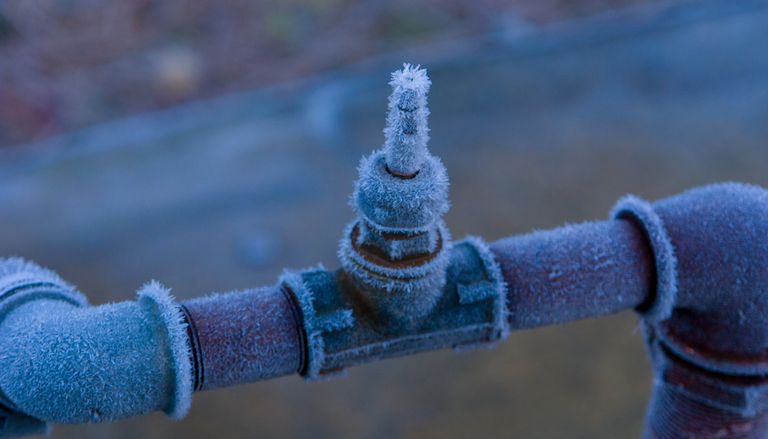Do you find yourself searching for related information on How to prepare your home plumbing for winter weather?

Cold weather can wreak havoc on your pipes, especially by freezing pipelines. Right here's how to prevent it from occurring and what to do if it does.
Intro
As temperature levels decline, the risk of frozen pipes rises, potentially leading to pricey repair work and water damages. Comprehending just how to stop icy pipes is critical for homeowners in cold environments.
Comprehending Frozen Pipelines
What causes pipelines to ice up?
Pipes freeze when revealed to temperatures listed below 32 ° F (0 ° C) for prolonged periods. As water inside the pipes ices up, it broadens, taxing the pipe wall surfaces and potentially triggering them to break.
Dangers and damages
Icy pipes can bring about water system disruptions, residential property damages, and costly repair work. Burst pipelines can flooding homes and create extensive architectural damages.
Indications of Frozen Pipes
Identifying icy pipes early can stop them from rupturing.
Just how to determine icy pipes
Seek reduced water circulation from faucets, uncommon odors or sounds from pipelines, and visible frost on subjected pipelines.
Prevention Tips
Protecting prone pipes
Wrap pipes in insulation sleeves or utilize warm tape to safeguard them from freezing temperature levels. Concentrate on pipes in unheated or external locations of the home.
Heating methods
Maintain indoor rooms effectively heated, particularly areas with plumbing. Open cupboard doors to enable warm air to distribute around pipes under sinks.
Safeguarding Outside Plumbing
Garden hoses and outside faucets
Disconnect and drain pipes garden tubes prior to winter months. Set up frost-proof spigots or cover exterior taps with insulated caps.
What to Do If Your Pipelines Freeze
Immediate actions to take
If you think icy pipes, maintain faucets open to relieve stress as the ice thaws. Utilize a hairdryer or towels soaked in hot water to thaw pipes slowly.
Long-Term Solutions
Structural changes
Take into consideration rerouting pipelines far from exterior walls or unheated locations. Add added insulation to attics, basements, and crawl spaces.
Upgrading insulation
Invest in top quality insulation for pipelines, attics, and walls. Correct insulation aids preserve consistent temperature levels and lowers the danger of frozen pipelines.
Conclusion
Preventing icy pipes calls for positive measures and fast responses. By recognizing the causes, indications, and safety nets, property owners can shield their plumbing during winter.
6 Proven Ways to Prevent Frozen Pipes and Protect Your Home
Disconnect and Drain Garden Hoses
Before winter arrives, start by disconnecting your garden hoses and draining any remaining water. Close the shut-off valves that supply outdoor hose bibs and leave the outdoor faucet open to allow any residual water to drain. For extra protection, consider using faucet covers throughout the colder months. It’s also important to drain water from any sprinkler supply lines following the manufacturer’s directions.
Insulate Exposed Pipes
Insulating your pipes is an effective way to prevent freezing. Pipe insulation is readily available at home improvement stores and is relatively inexpensive. Pay close attention to pipes in unheated areas such as the attic, basement, crawl spaces, or garage. Apply foam insulation generously to create a buffer against the cold. You can also wrap your pipes in heat tape or thermostat-controlled heat cables for added warmth.
Seal Air Leaks
Inspect your home for any cracks or openings that could let in cold air. Seal any holes around the piping in interior or exterior walls, as well as the sill plates where your home rests on its foundation. Additionally, make sure to keep your garage door closed unless you’re entering or exiting. Leaving it open creates a significant air leak that can lead to frozen pipes.
Allow Warm Air Circulation
During cold snaps, it’s essential to allow warm air to circulate evenly throughout your home. Leave interior doors ajar to promote better airflow. Open kitchen and bathroom cabinets to help distribute heat consistently around the rooms. If you have small children or pets, be sure to remove any household chemicals or potentially harmful cleaners from open cabinets for safety.
Let Faucets Drip
A small trickle of water can make a big difference in preventing ice formation inside your pipes. When temperatures drop significantly, start a drip of water from all faucets served by exposed pipes. This continuous flow helps prevent the water from freezing. Additionally, running a few faucets slightly can relieve pressure inside the pipes, reducing the chances of a rupture if the water inside does freeze.
https://choateshvac.com/6-proven-ways-to-prevent-frozen-pipes-and-protect-your-home/

I was made aware of that article on Winter Plumbing Precautions: Preventing Frozen Pipes from an acquaintance on a different web address. Enjoyed reading our blog entry? Please share it. Let other people check it out. Thanks a bunch for your time. Please come visit our site back soon.
Estimate Free